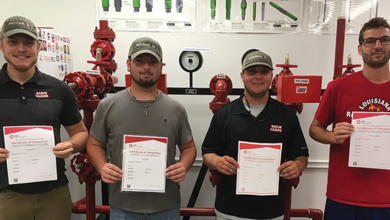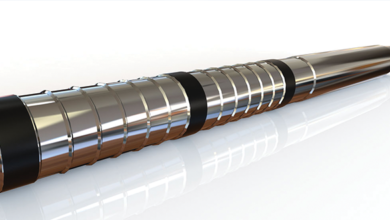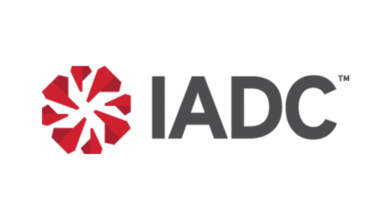Drilling & Completion Tech Digest
New service aims to reduce subsea BOP downtime

Diamond Offshore Drilling has launched its Sim-Stack service, a cybernetic BOP service enabling the company to continuously and accurately assess BOP status. When issues arise, the service immediately determines a proper course of action while providing a third-party statement of fact to the operator, US Bureau of Safety and Environmental Enforcement and other regulatory bodies.
Acting as the “virtual twin” of a BOP system on a drilling vessel, Sim-Stack replicates the BOP hydraulically and electrically to assess its overall health and regulatory compliance. When component failures are identified, Sim-Stack provides critical feedback without human bias in a systematic method to make informed subsea stack decisions.
“The majority of nonproductive time for an offshore drilling rig relates to subsea equipment certification, repair and maintenance,” Marc Edwards, President and CEO of Diamond Offshore, said. “Our Sim-Stack service is our latest advancement to reduce BOP downtime, resulting in operational efficiency gains for our clients.”
Moreover, Sim-Stack serves as a training tool for offshore personnel to learn and further develop subsea BOP expertise in a safe and dynamic environment, similar to simulated flight training in the aviation industry. In conjunction with BOP risk mitigation services, Diamond Offshore developed and implemented this new service across all eight BOP systems on its four dynamically positioned drillships working in the Gulf of Mexico. The company plans to expand this service to additional rigs in its global fleet.
Subsea cementing system set for North Sea field trials
DeltaTek Global has announced two successful onshore field trials of its SeaCure system, resulting in subsequent offshore trials with two North Sea operators as part of a project backed by the Oil & Gas Technology Center. SeaCure is a subsea cementing system that delivers stabbed-in inner string cementing for subsea wells. The system’s initial proof-of-concept trials took place in April at an onshore test well at Frank’s International’s Aberdeen base. These will be followed this summer by three offshore trials in live North Sea wells operated by Chevron and Siccar Point Energy, down to a water depth of 5,000 ft.
“SeaCure’s inherent benefits include improved success rates of cement placement back to the seabed for conductor and surface casings, performing a pressure test of a subsea casing string prior to and post cementation, as well as entirely eliminating a clean-out run from a subsea drilling program,” said Tristam Horn, Chief Executive Officer and Founder of DeltaTek.
Australian subsea equipment JIP begins new work phase
Wood has announced the next phase of a collaborative industry effort to develop a better understanding of the reliability of subsea equipment for use offshore Australia. The Subsea Equipment Australian Reliability Joint Industry Project (SEAR JIP) is supported by Chevron Australia, ConocoPhillips, Quadrant and Woodside.
The project is focused on collaboration and knowledge sharing to improve subsea equipment design and reduce the requirement for costly and time-consuming interventions in Australia’s challenging offshore warm-water environment. The latest phase of the SEAR JIP will continue collaborative efforts across Australian subsea system operators and continue to collect reliability data for subsea equipment operations. This phase will also expand a marine fouling subsea test program, establish marine fouling cleaning best practices, identify optimization opportunities, and evaluate the performance of umbilicals and identify best practice remediation strategies.
Bit wear monitoring service helps to maintain drilling efficiency in Kuwait wells
GEOLOG recently deployed its BitLife real-time bit wear monitoring services for Kuwait Oil Company (KOC) during the drilling of deep exploratory HPHT wells in northern Kuwait, where predicting the degree of bit efficiency was a concern.
KOC wanted to avoid potential nonproductive time arising from the loss of the bit or parts of the bit in hole, or from drilling an under-gauge hole due to excessive bit wear that would require subsequent reaming. A technique was required to qualify the condition of the bit in real time in order to optimize drilling parameters, and objectively justify pulling out of hole for bit change. The BitLife service was deployed in a 22-in. hole section drilling from the Rumaila formation of interbedded carbonate and shales into the Burgan sandstone formation.
As drilling continued, bit wear was detected through the increasing presence of alkenes, accompanied by a gradual drop in average rate of penetration (ROP) from approximately 32 ft/hr to below 18 ft/hr, as well as an increase in torque from an average of 12k ft/lb to more than 19k ft/lb. Bit end-of-life was confirmed on surface by the damaged cutters and under-gauge bit condition.
In the 16-in. hole section, drilling through the Zubair formation to the Minagish and Mahkul carbonates, significant alkenes were detected, and ROP dropped from an average of 25 ft/hr to 12 ft/hr, indicating increased wear. In response, the bit was pulled out of hole and showed a high degree of wear with chipped teeth, but still in gauge.
The alkene-detection BitLife service was deployed with water-based mud (with diesel added) and oil-based mud. Drilling parameters were optimized to get maximum footage and to determine the optimal time to perform a bit trip.





